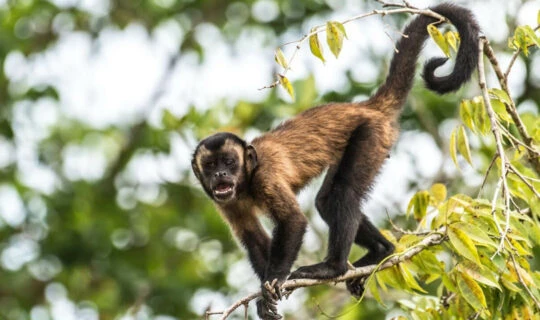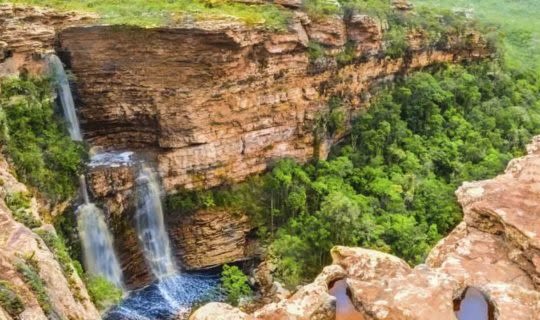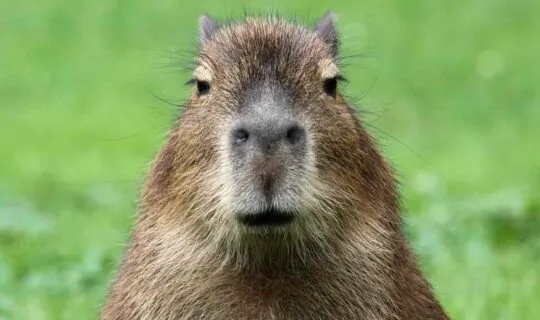Nov 6, 2020
|Last updated on March 29th, 2021 at 09:02 am
Animals in Patagonia
You may be wondering what animals live in Patagonia? The truth is, there are several animals in Patagonia, not only unique to South America but Patagonia itself. Patagonia is a private nature reserve in the southernmost region of South America shared by Argentina and Chile. Separating the two countries, yet not dividing the nature reserve, is the impressive Andes mountain range.
Spanning an impressive 402,700 square miles, Patagonia is one of the largest nature reserves and most diverse landscapes globally, so it is no wonder that the animals in Patagonia are nearly innumerable. The western region consists of pristine glacial lakes, towering fjords, and unique glaciers. While the eastern portion consists of flat terrain, deserts, and steppes stretching until the Atlantic Ocean.
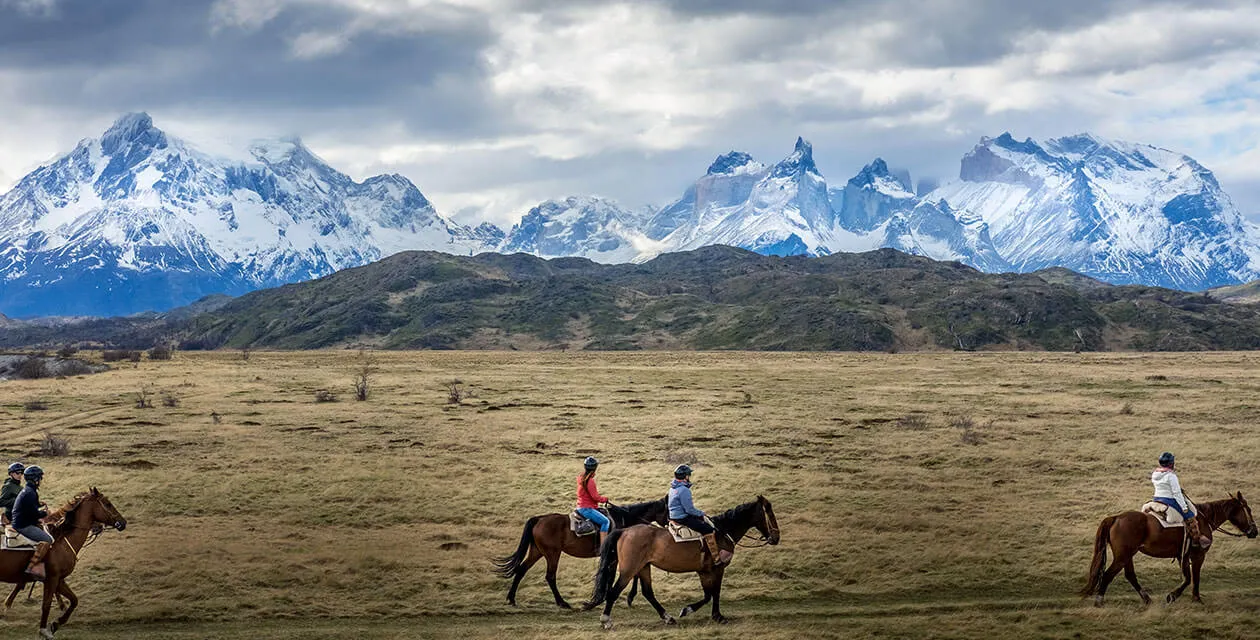
Patagonia is bounded by water, with the Pacific Ocean on its western shore and the Atlantic Ocean to the east. Additionally, it has numerous rivers and straits stretching throughout the inland that connect the two oceans. Even though most of central Patagonia is desert-like vast lands, these running waters help sustain the region’s remarkable wildlife.
With so many varying landscapes, each housing many species, Patagonia is a nature lover’s ultimate heaven. Every year wildlife spotters travel to Patagonia to see some of its most iconic and intriguing animals, including land and marine mammals. Here is a list of some of the most iconic animals in Patagonia.
Patagonian Puma
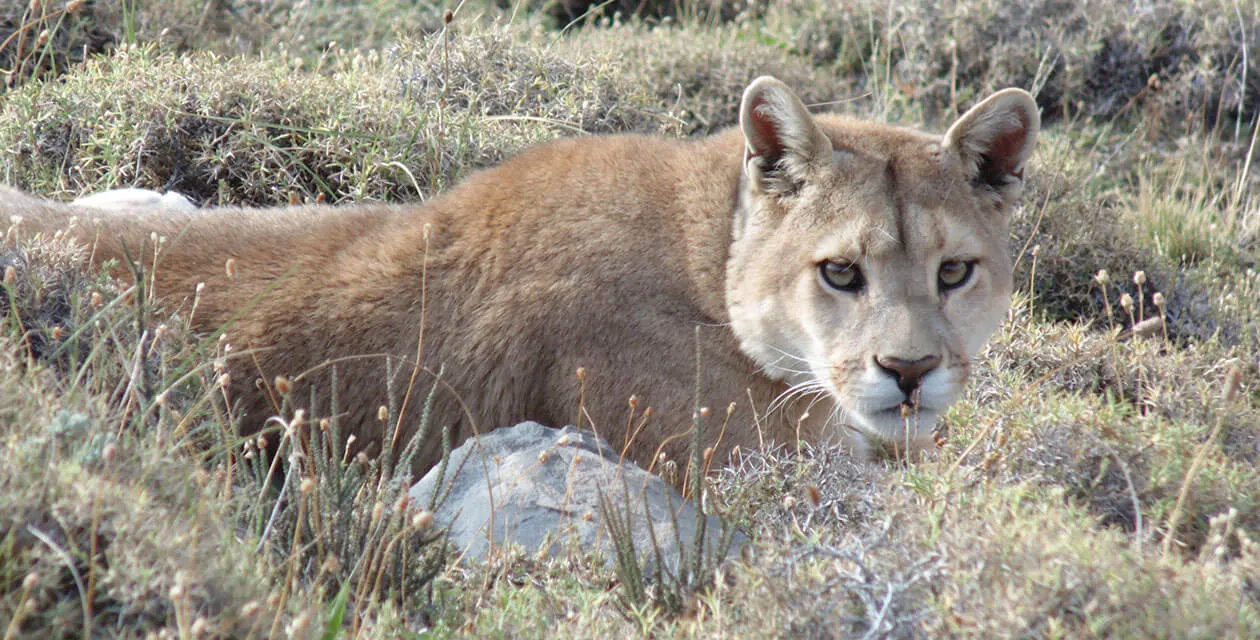
First on our list of animals in Patagonia is the Patagonian Puma. The puma is likely one of the most sought-after animals in Patagonia for visiting wildlife lovers. The cat ancestor is one of the largest land carnivores in Patagonia. It is the only member of the cat family in the southernmost area of the reserve. Often described as the “coolest” animal in Patagonia, the puma grows to an impressive 12 feet and is the largest predator in all of Patagonia. The agile hunter often feeds on local guanacos and large birds.
Torres del Paine is the best destination in Patagonia for puma tracking, with nearly guaranteed sightings. We recommend allocating at least three days to your trip here for the best chances. Pumas are most often spotted at dawn and dusk, so you need to be prepared for a few early morning excursions. Binoculars can be useful to spot them, as well as many other species in the area!
Guanacos
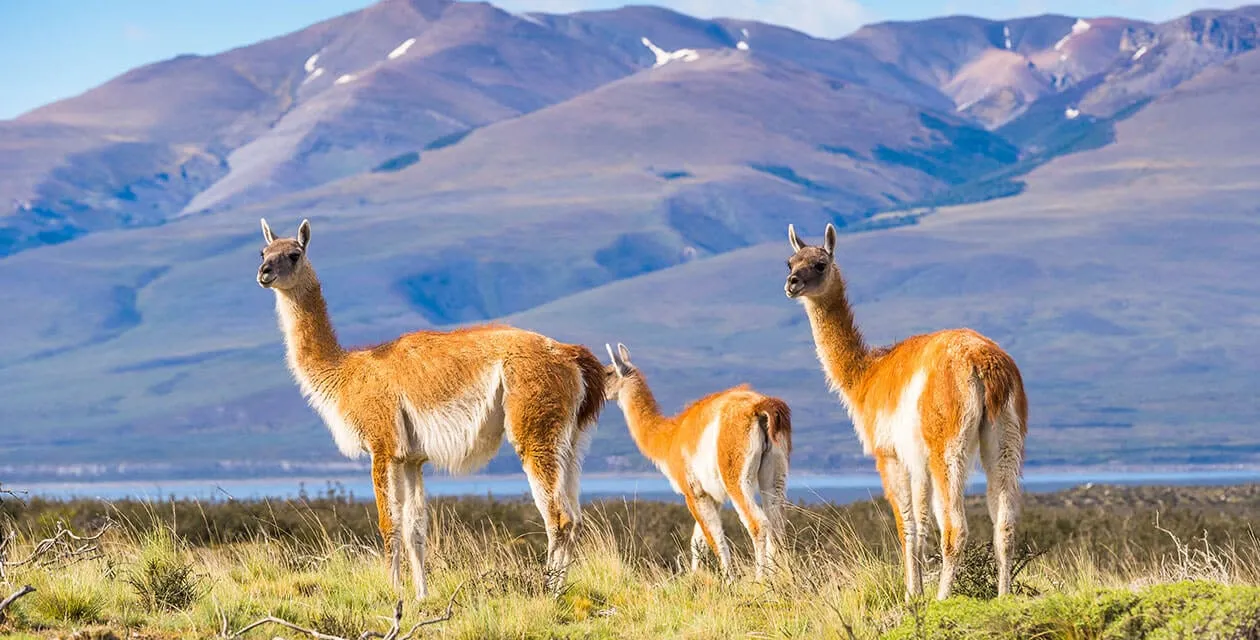
Guanacos, the poor prey of pumas, are camelids endemic to South America. They are one of the largest mammals of the continent, standing approximately 100 cm ( 3.5 feet) at the shoulder and weighing between 90 kg – 130 kg (200 and 300 pounds). The guanaco can run nearly 35 miles per hour—faster than any other Patagonian animal except the puma. At the smallest sign of danger, a guanaco will make a warning sound. Then, the herd will swiftly flee across the altiplano of the Andes. Guanacos are usually seen in small packs or family bands.
Guanacos are found in the forests, grasslands, deserts, and shrublands of the Andean foothills of Argentina, Chile, and beyond Patagonia in Peru. Tierra Del Fuego is one of the destinations where guanacos can easily be spotted
Patagonian Gray Fox
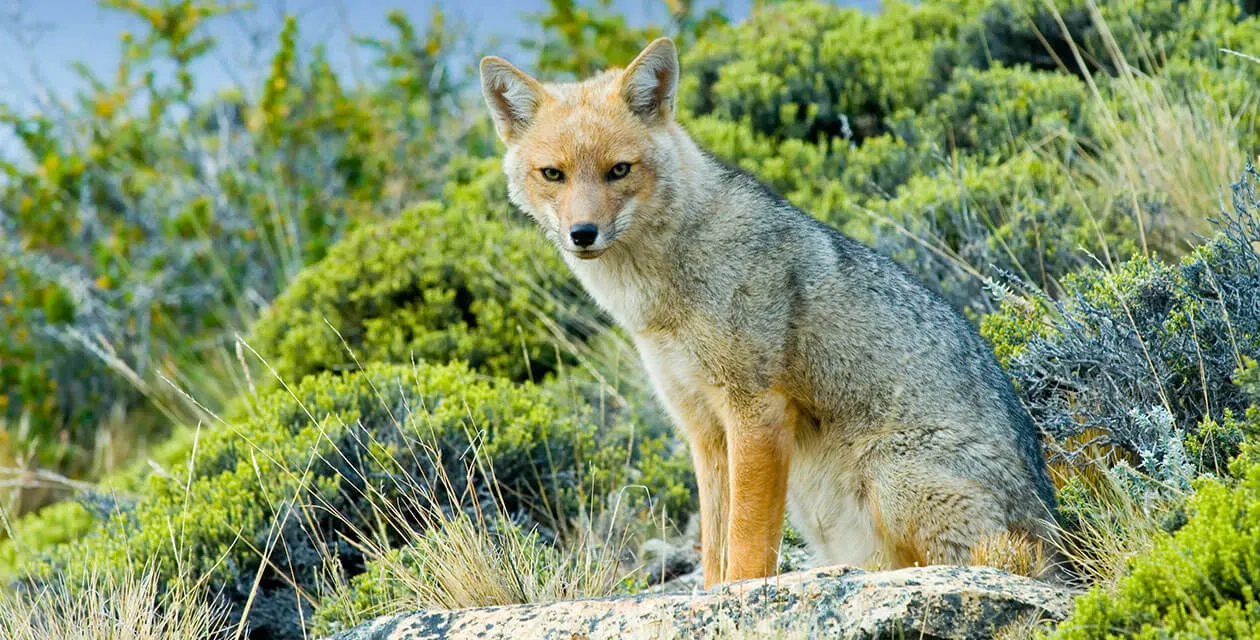
One of the cutest animals in South America is the South American gray fox. The South American gray fox is a small fox-like canid, weighing 2.5 to 5.5 kilograms (5.5 to 12.0 lb), and measuring 65 to 110 cm (26 to 43 in) in length including a tail of 20 to 43 cm (8 to 17 in).
The gray fox is one of the more common animals in Patagonia and beyond. They are found in the Southern part of South America, particularly in Argentinian and Chilean Patagonia. However, they can occasionally be seen in Peru. The gray fox resides in various habitats, from the warm shrublands of the Argentine uplands to the cold, Patagonian steppe. These foxes generally inhabit plains and low mountains and prefer open areas.
Culpeo Fueguian Fox
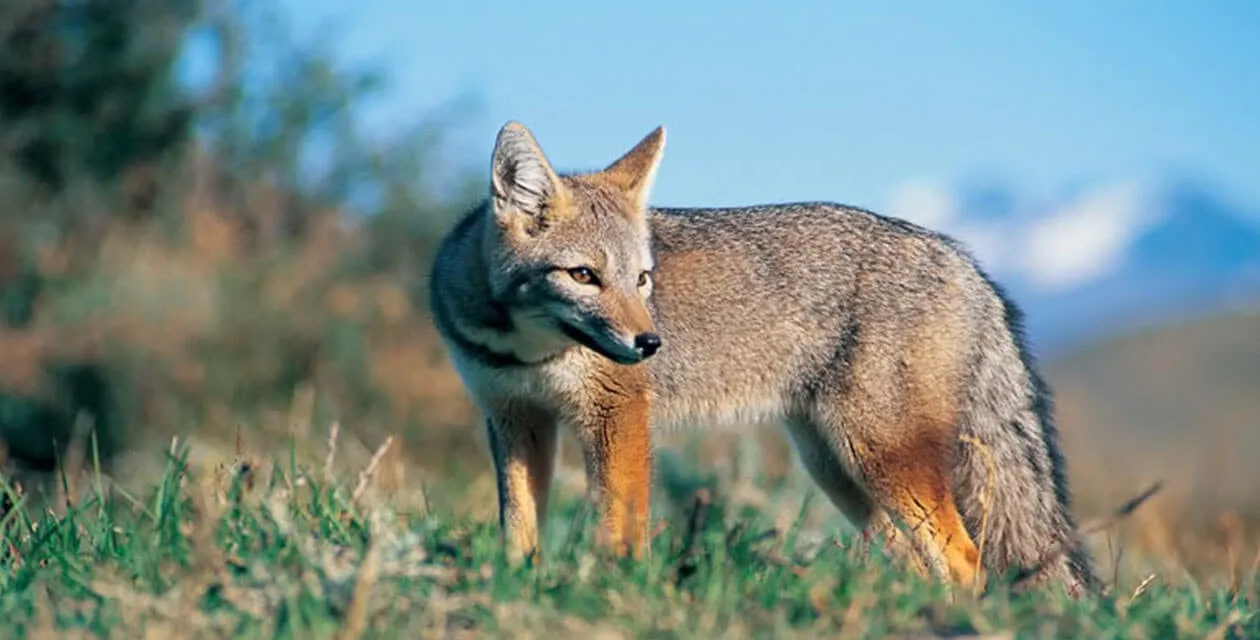
The Culpeo (Lycalopex culpaeus), sometimes known as the Zorro Culpeo, Andean zorro, or Andean fox, is a South American fox species. Regardless of the name, it is not a true fox but more-closely related to wolves and jackals. In appearance, it bears many similarities to the widely recognized red fox. It has grey and reddish fur, a white chin, reddish legs, and a stripe on its back that may be barely visible.
The Culpeo lives in a wide variety of habitats of western South America. They live in temperate rainforests, deserts, and high plateaus, like the Altiplano, up to 4,800 meters 15,700 ft.
Pichi (Patagonian Armadillo)
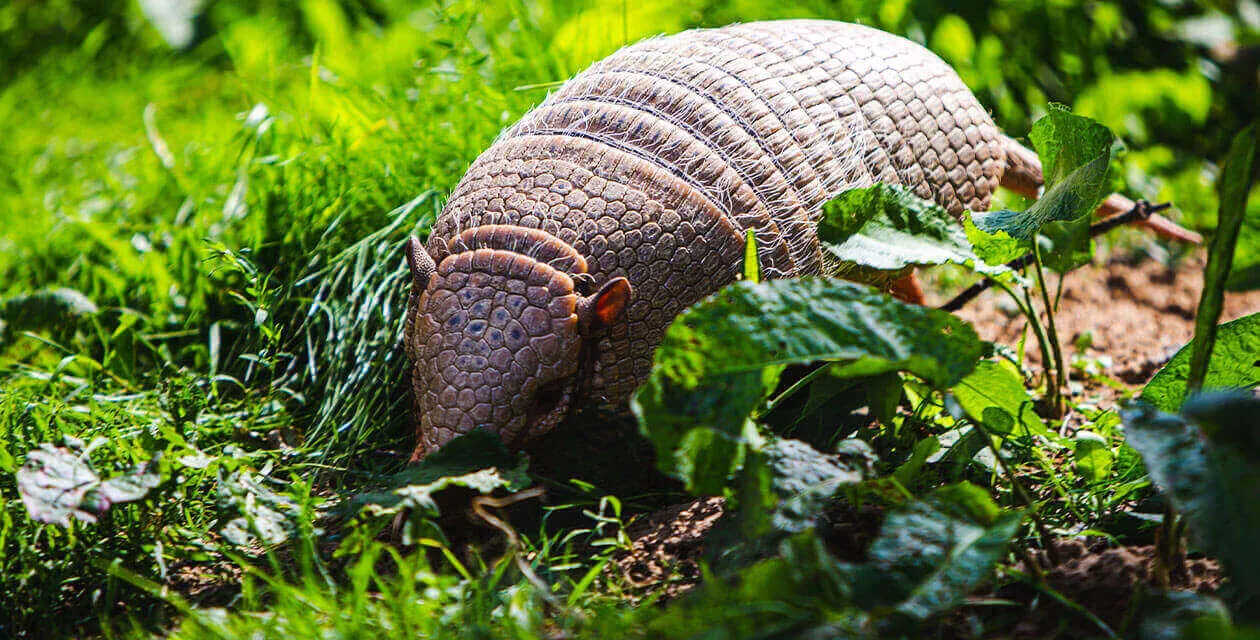
Pichis are relatively small armadillos, measuring approximately 27 cm (11 in) long, with a tail of about 11 cm (4.3 in). Adults weigh anything from 700 to 1,500 grams (25 to 53 oz), and males may be slightly larger than females.
Spot Pichis from central and southern Argentina (Patagonia), west to the Andean grasslands of Chile, and south to the Strait of Magellan. Within this region, it most commonly lives on arid or semiarid grasslands. Though, they also are in other environments if they have sandy soils suitable for burrowing.
Patagonian Mara
Also known as the Patagonian cavy, Patagonian hare, or Dillaby, this rabbit-like animal lives in open and semi-open habitats in Argentine Patagonia. It is notably a monogamous species, pairing with one partner. Though, often breeds in warrens shared by several pairs.
Patagonian maras are found only in Argentinian Patagonia. Maras prefer the sandy and low shrub habitats in the Valdes Peninsula of Puerto Madryn. They have adapted well to a cursorial lifestyle on the open plains and steppe, with long legs and well-developed sensory organs, making them capable of running and communicating in these open habitats.
Andean Condor
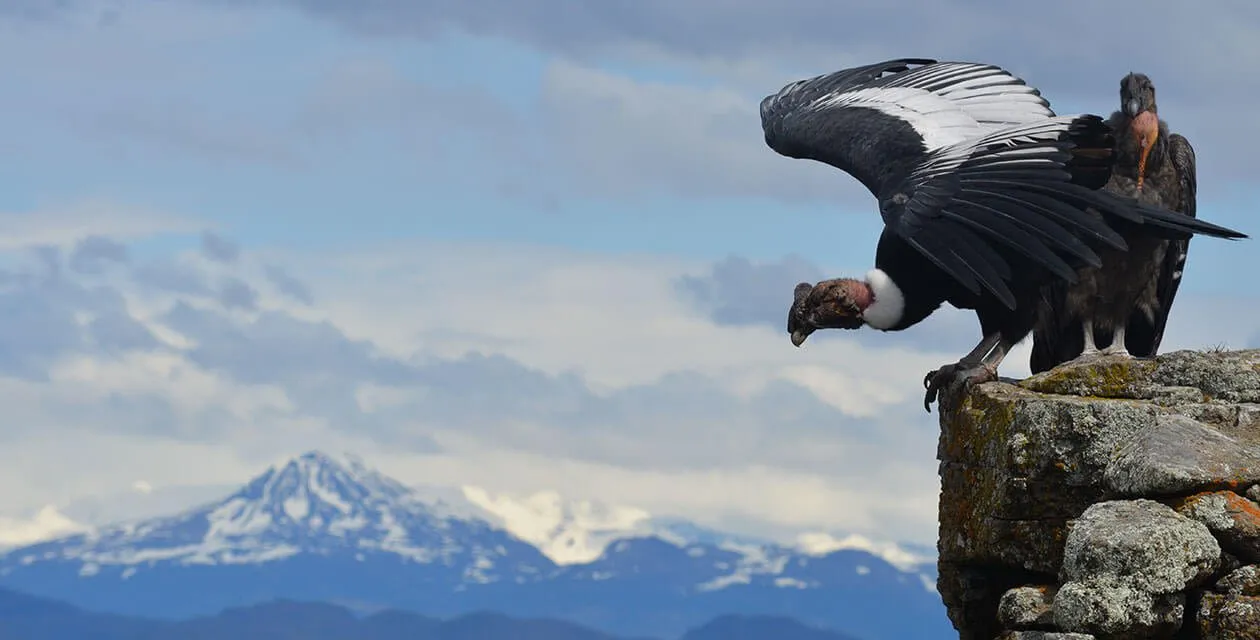
Another one of the more popular animals in Patagonia is the Andean Condor. This large black vulture is recognizable by its contrasting white feathers along the base of its neck and wings. Typically, the condor’s head and neck are nearly featherless, with dull red-tinted skin. For the lucky spotter, you may notice the condor’s skin change color in response to its emotional state. The Andean Condor prefers to feed on large carcasses, such as those of deer or cattle.
Typically, spot the condor along the Andes Mountain Range, including the northern portions of Venezuela and Colombia. However, the visuals here are pretty rare. Following south along the Andes to Ecuador, Peru, Chile, Bolivia, and Tierra del Fuego – in the very south of Patagonia – sightings become more common. You can spot Andean condors on our Colca Canyon tours.
Southern Crested Caracara
See the Southern Crested Caracaras from Tierra del Fuego in Patagonia to Peru. There is also an isolated population on the Falkland Islands. The Southern Crested Caracara avoids the Andean highlands and dense humid forest, such as the Amazon rainforest. Otherwise, they can be seen in virtually any open or semi-open habitat and are often found near humans.
It has a total length of 50–65 cm (20–26 in) and a wingspan of 120–132 cm (47–52 in). Caracaras from the colder southern Patagonia are usually larger than those from tropical regions. The southern caracaras that you see in Patagonia would be the biggest of its family.
Whales
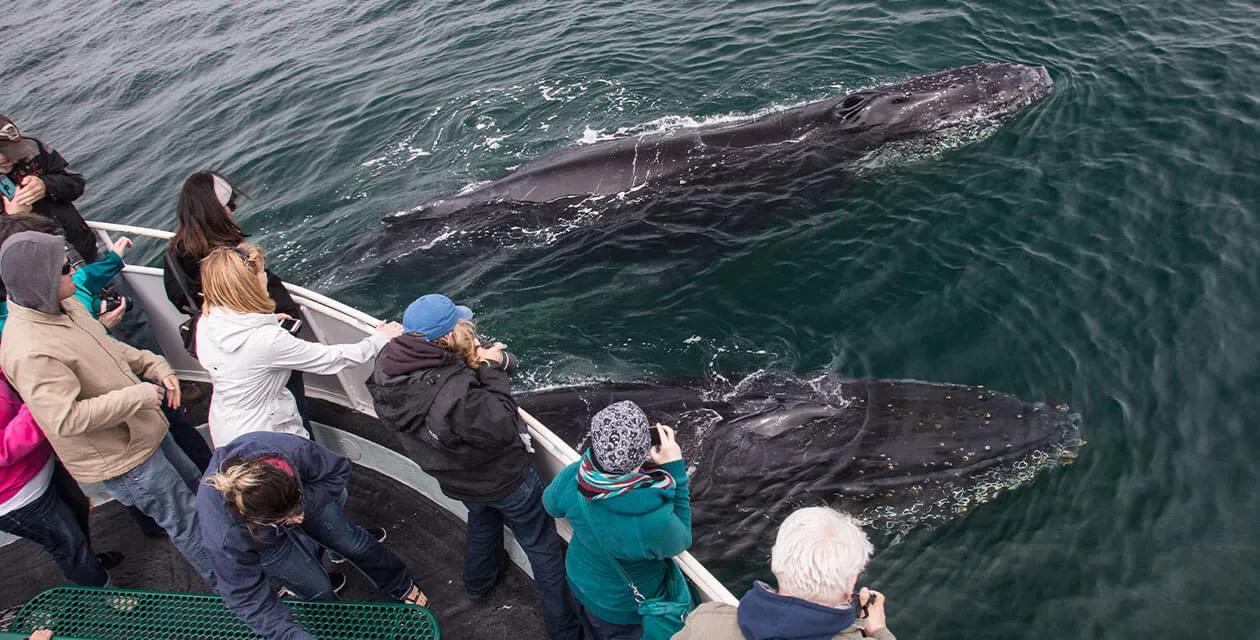
There are many destinations to spot whales globally. However, Peninsula Valdes in Argentinian Patagonia and Chiloe Island in Chilean Patagonia can be some of the best viewing destinations. There are four main types of whales in Patagonia:
Orcas
Peninsula Valdes on the Atlantic is the place to watch Orcas in the months of September, March, and April.
Southern Right Whale
From winter to spring in South America (June-December), a large number of Right Whales approach the Valdés Peninsula region, mainly Golfo San José and Golfo Nuevo, in the Province of Chubut Argentina. A whale watching tour is recommended.
Humpback Whale
See Humpback whales in Francisco Coloane Marine Park in the Chilean fjords. Here, there are also many whale watching adventure cruises on offer. Usually, December to March is a good time to observe the Humpback Whale in these parts.
Blue Whales
Massive blue whales can be spotted off of the Island of Chiloe in Chile from December to March.
Southern Elephant Seals
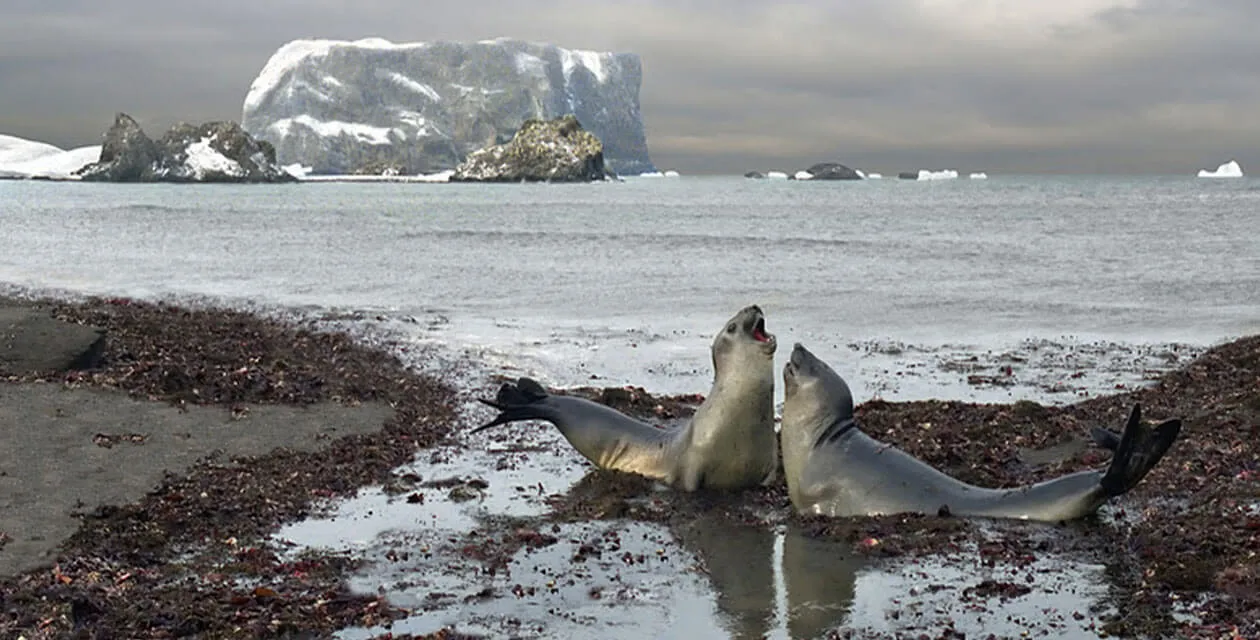
Southern elephant seals are the largest of all seal species. They get their name from the shape of the male’s nose, which resembles an elephant’s trunk. They exhibit the greatest sexual performance of all mammals. During the breeding season, a male may gather over 50 females.
They are easiest to spot in the UNESCO World Heritage Site of Peninsula Valdes, where you can kayak and walk alongside vast colonies of one of Patagonia’s largest animals. There are around 500 groups here, with up to 130 females in each. One of the more entertaining past-times is witnessing the males battle each other for territorial dominance.
South American Sea Lions
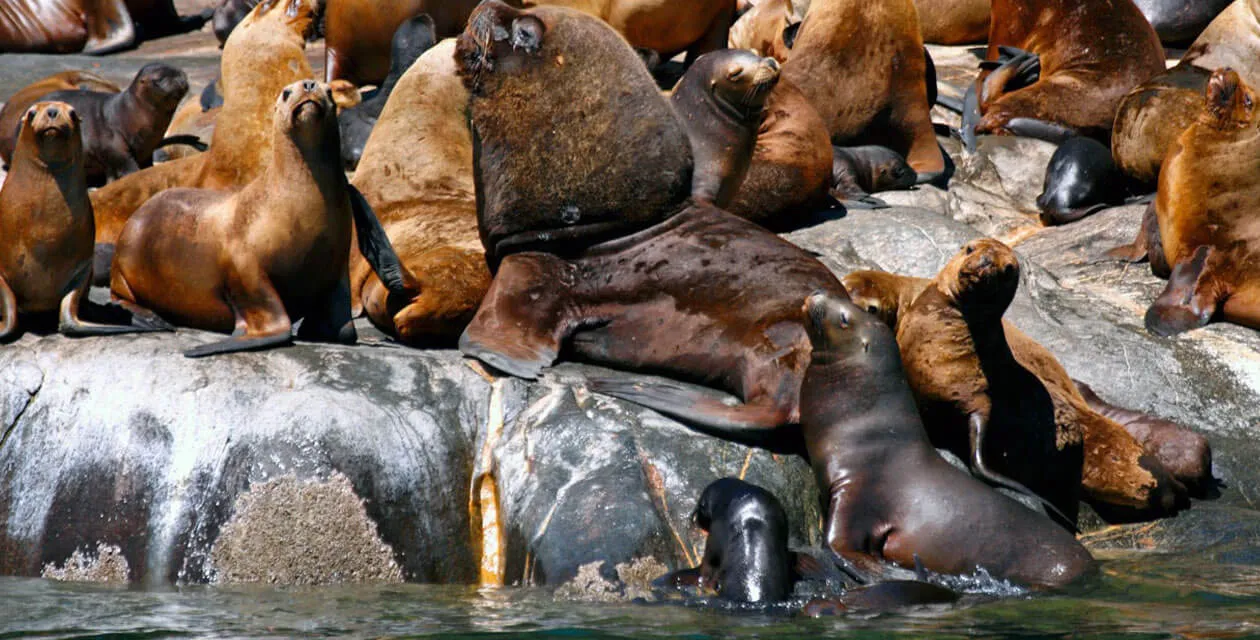
These fierce but fragile creatures are one of the largest animals on the Valdes Peninsula’s coast, reaching up to 3 m long and weighing up to 350kg.
Groups of males, with thick manes covering their neck and chest, begin to colonize the area from December. They are very territorial while awaiting the arrival of the females. Each male has a harem of up to ten females, who give birth to their young a few days after coming on the Peninsula. They are ready to mate again only a week after birth.
Dolphins
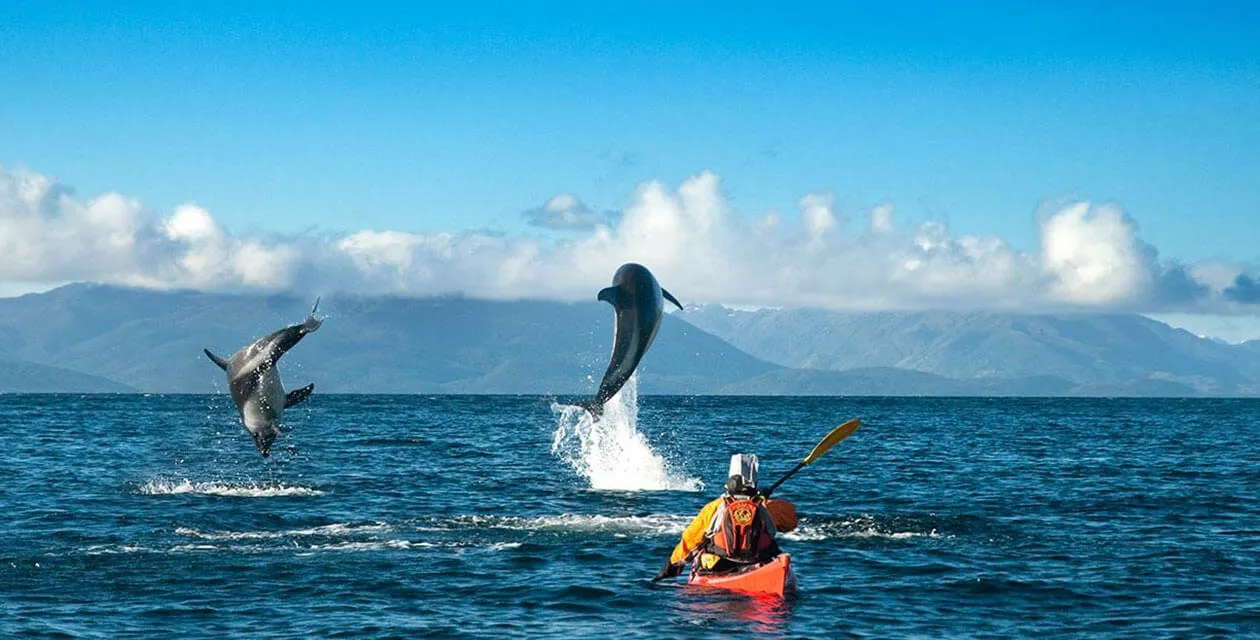
There are several lively & energetic species of dolphins in Patagonia’s waters! Most of them arrive in Patagonia during the Southern Hemisphere winter (June – August). However, see these species year-round.
Commerson’s Dolphin
Distinguish the Commerson’s Dolphin by its contrasting black and white tones. The head, tail, and flippers are all black, while the rest of the body is stark white. On the Argentine coast, spot the dolphins from the Gulf of San Matías to Tierra del Fuego’s coast, usually between May and January.
Risso’s Dolphin
Risso’s dolphins form mid-sized packs that surface slowly, occasionally breaching or bow-riding. They have a heavily-scarred grey body with long, pointed flippers and a tall dorsal fin. Spot Risso’s dolphins on the Pacific and Atlantic coasts of Patagonia.
Peale’s Dolphin
It is also commonly known as the black-chinned dolphin or even Peale’s black-chinned dolphin. The Peale’s dolphin is a small species found in the waters around Tierra del Fuego at South America’s foot.
Dusky Dolphins
It features a small body with a dark grey back and a white belly. Its dorsal fin is two-toned. The dusky dolphin is one of the most common small cetaceans. See the Dusky Dolphins off the Patagonian coasts of Argentina. Their movement patterns are unknown, it is possible to spot them all year long.
Penguins
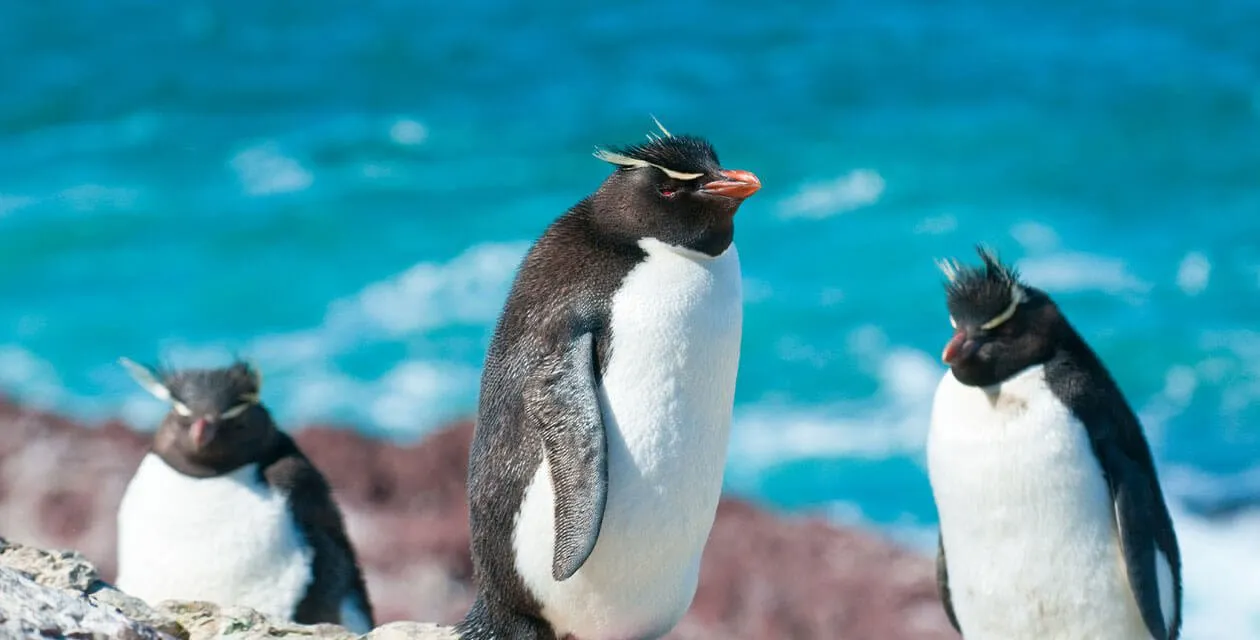
Last on our list of animals in Patagonia are penguins. Patagonia is home to five different penguin species. Depending on the species and the season, you can spot the penguins anywhere from Chiloe Island to Tierra del Fuego. It is even possible to spot them on day trips to rocky hillside nests or during boat landings at giant colonies.
Penguins start to arrive along the Patagonian coast in September. This is when they begin breeding and stay until mid-March. The best time to see them is December-January. During this time, adorable, fuzzy little chicks are still feeding in their nests.
Magellanic Penguins
The Magellanic penguin is a South American penguin. It breeds in coastal Patagonia, including Argentina, Chile, and the Falkland Islands. Some migrate to Brazil, as far north as Espirito Santo.
Humboldt Penguins
Humboldt penguins take their name from the chilly Humboldt Current. The Humboldt Current flows north from Antarctica along the Pacific Coast of Patagonia. Both the current and penguins are named after the 18th-century explorer Alexander von Humboldt. Spot them on the Chilean coast of Patagonia or Chiloe Island.
Gentoo Penguins
The likeliest place to see them is on the Argentine side of Tierra del Fuego, at the historic Estancia Harberton ranch, where a small colony has established itself on a nearby islet.
Southern Rockhopper Penguins
This angry-looking bird is in the southern hemisphere. About one million pairs of Magellanic penguins breed on Patagonia’s coast in over 60 colonies, with Punta Tombo the largest at around 200,000 breeding pairs.
King Penguins
Tierra del Fuego’s King penguin colony is the only one outside the Sub-Antarctic islands. This makes it a far more accessible option for photographers and nature lovers. King penguins breed on subantarctic islands at the northern reaches of Antarctica and Tierra del Fuego. They also breed in the Falkland Islands and other temperate islands of the region.
Ready to see the Animals in Patagonia?
Are you ready to go wildlife spotting in Patagonia? Contact a Patagonia Travel Expert and start planning the specifics of your trip. We’ll customize your tour details – accommodations, excursions, transfers, and flights.
Mentioned in this article




